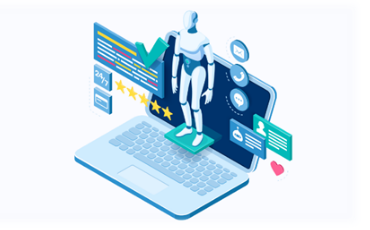Project Design:
The goal of this project is to develop a system that utilizes AI model and facilitates efficient candidate search and recruitment processes. The model will take in search parameters or context provided by the user and generate relevant keywords for searching candidates across various websites. The data from the profiles will be acquired APIs provided by the platforms or web scraping and then processed by ai model to gain insights on the candidate.

User Interface:
- Provides an interface for users to input search parameters and context.
- Allows users to customize search criteria and preferences.
Search Parameter Processor:
- Processes user input and extracts relevant search parameters and context.
- Validates and formats input for further processing.
Keyword Generator:
- Generates relevant keywords based on the processed search parameters.
- Utilizes algorithms to expand and refine search terms.
- Considers synonyms, related terms, and context-specific variations.
Search Engine Integration:
- Interfaces with various websites and platforms for candidate search.
- Utilizes APIs provided by platforms where available.
- Implements web scraping for platforms without APIs.

Data Acquisition Module:
- Retrieves candidate profiles from external websites based on generated keywords.
- Handles authentication and access to APIs.
- Implements web scraping where APIs are not available.
Data Preprocessing:
- Cleans and preprocesses acquired candidate data for analysis.
- Standardizes data formats and structures.
- Handles missing or incomplete information.
AI Model for Candidate Insights:
- Utilizes a trained AI model to analyse candidate profiles.
- Extracts relevant insights such as skills, experience, and qualifications.
- Provides a consolidated view of candidate information.
Insights Database:
- Stores processed candidate insights in a structured database.

- Supports efficient retrieval and querying of candidate data.
User Dashboard:
- Displays search results and candidate insights to the user.
- Allows users to interact with and filter candidate information.
- Provides a user-friendly interface for further exploration.
Security and Compliance Module:
- Implements security measures for user authentication and data protection.
- Ensures compliance with privacy regulations in data handling and storage.
Logging and Monitoring:
- Logs system activities and errors for auditing and troubleshooting.
- Implements monitoring tools to track system performance and usage.
Workflow:
- User provides search parameters and context through the User Interface.
- Search Parameter Processor extracts relevant information and passes it to the Keyword Generator.
- Keyword Generator generates search keywords and sends them to the Search Engine Integration component.
- Search Engine Integration retrieves candidate profiles from various platforms using APIs or web scraping.
- Acquired data is processed and cleaned by the Data Acquisition Module.
- The AI Model for Candidate Insights analyses candidate profiles and extracts relevant information.
- Processed insights are stored in the Insights Database for efficient retrieval.
- The User Dashboard displays search results and insights to the user for further exploration.
- Security measures ensure user authentication and data protection throughout the process.
Project Architecture
Development Timeline (5-6 Months):
1) Project Planning:
- Define project goals, scope, and requirements.
- Identify target platforms and websites for candidate search.
- Determine key features and functionalities.
- Plan development and testing phases.
2) Research and Data Collection:
- Investigate APIs available on various platforms.
- Explore web scraping options.
- Identify data fields for candidate search.
- Evaluate ethical and legal considerations.
3) AI Model Development:
- Choose or develop a suitable AI model.
- Train the model on relevant datasets.
- Implement context-based keyword generation.
- Optimize the model for efficiency.
4) Integration:
- Develop user interface for search parameters and results.
- Integrate AI model with the search interface.
- Implement data acquisition through APIs or web scraping.
- Ensure data security and privacy compliance.
5) Testing:
- Conduct unit testing for components.
- Perform integration testing.
- Test system with various scenarios and edge cases.
- Address bugs and issues.
6) Deployment:
- Prepare system for deployment.
- Set up necessary infrastructure.
- Conduct final testing in the production environment.
- Deploy the system for user access.
7) Monitoring and Optimization (Ongoing):
- Implement monitoring tools.
- Gather user feedback and make improvements.
- Continuously optimize the AI model.
8) Documentation and Training:
- Document system architecture and APIs.
- Provide user documentation.
- Conduct training sessions.
9. Maintenance and Updates (Ongoing):
- Monitor system performance.
- Release periodic updates.
- Stay informed about changes in APIs or web scraping policies.

Challenges:
Accessing the data from the web would be major challenge as not all platforms can provide APIs to access the data. The second challenge would be to create an internal logic system to track search result accuracy that would be used to retrain and evolve the model with time.
As you have stayed this long, we feel this might interest you!


